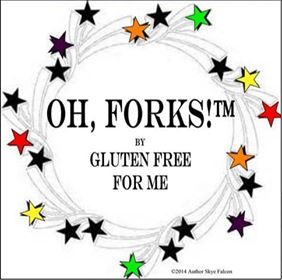Living with Celiac Disease or Gastroparesis alone can be incredibly challenging, but dealing with both simultaneously? That’s a life-altering experience that affects nearly every aspect of eating, socializing, and self-care. These two conditions often clash in how they are managed, making everyday choices feel like a frustrating compromise between what your body needs and what it can tolerate.
This article explores what it means to live with both Celiac Disease and Gastroparesis, the unique difficulties this combination creates, and how patients can find ways to cope, adapt, and advocate for themselves in a world that often does not understand invisible illness. Plus, living with these conditions gives me personal insight into the things many others newly diagnosed might be facing.
What Is Celiac Disease?
Celiac Disease is an autoimmune disorder where ingesting gluten, a protein found in wheat, barley, and rye, triggers the immune system to attack the small intestine. This damages the villi, small structures responsible for nutrient absorption, leading to malnutrition, digestive issues, and systemic problems. The only treatment is a strict, lifelong gluten-free diet.
What Is Gastroparesis?
Gastroparesis is a disorder that affects the stomach’s ability to empty properly. Instead of moving food into the small intestine in a timely manner, the stomach slows down or stops its normal contractions. Symptoms include:
- Nausea
- Vomiting
- Early fullness
- Bloating
- Weight loss
- Poor appetite
It is often caused by diabetes, surgeries, or neurological issues, but many cases are idiopathic, meaning the cause is unknown.
When Celiac and Gastroparesis Collide
1. Opposing Diets
Managing Celiac Disease requires a high-fiber, whole-food-based gluten-free diet, filled with fruits, vegetables, whole grains, legumes, and naturally gluten-free grains like quinoa and brown rice.
Gastroparesis, however, often demands the opposite: a low-fiber, low-fat, easily digestible diet. Patients are told to eat soft, bland foods like white rice, mashed potatoes, and cooked vegetables, foods that are easy on the stomach but often lack the nutrients that celiac patients desperately need to absorb.
Result? Many foods that are “safe” for one condition trigger symptoms in the other. Finding balance is exhausting and sometimes impossible.
2. Malnutrition Risk
Both conditions put individuals at high risk for nutrient deficiencies, like iron, B12, calcium, folate, and more. With Celiac, the small intestine is damaged and can’t absorb nutrients well. With Gastroparesis, food may sit in the stomach too long or cause vomiting, further reducing absorption and appetite.
Double jeopardy: You may be eating “right,” but your body still can’t nourish itself.
3. Constant Food Anxiety
People with both conditions often develop extreme anxiety around eating. Every meal becomes a minefield of:
- Will this food contain hidden gluten?
- Will it trigger nausea or bloating?
- Will I be in pain for hours after?
- What will I eat if I can’t tolerate even gluten-free options?
This can lead to disordered eating patterns, fear of food, and isolation.
The Emotional and Social Toll
Living with Celiac Disease and Gastroparesis is not just physically draining; it is emotionally isolating. You are often dismissed because you “do not look sick,” or people assume you are just a picky eater.
You might:
- Skip social events involving food
- Turn down invitations out of fear or exhaustion
- Feel overwhelmed by the constant need to explain your condition
- Struggle with guilt, frustration, and even depression
The lack of understanding, even among some healthcare providers, adds to the burden.
Coping Strategies for Daily Life
Though life with Celiac Disease and Gastroparesis is uniquely difficult, people do find ways to manage, with patience, creativity, and support.
Work with a Specialized Dietitian
Find someone who understands both conditions. They can help you build a modified diet that reduces symptoms while meeting basic nutritional needs.
Focus on Nutrient-Dense Liquids
When solids are hard to tolerate, smoothies, broths, or meal-replacement drinks (certified gluten-free) can help.
Meal Timing and Portion Control
Small, frequent meals reduce gastric stress and may be easier to digest than large portions.
Stay Ahead of Symptoms
Work with a GI specialist to manage nausea, reflux, and constipation with medications or therapies that do not interfere with your gut motility.
Advocate for Yourself
Join support groups, bring printed resources to medical appointments, and do not be afraid to push for better care.
On a personal level, living with Celiac Disease and Gastroparesis is incredibly complex, and one of the hardest things I repeatedly try, and fail, at managing. In decades of “managing,” I have learned that the grief from living with these conditions ebbs and flows when it wants to and it is okay to admit defeat some days. There is a certain power in owning your own resilience when it comes to chronic and progressive diseases day by day.
With the right care, support, and knowledge, it is possible to carve out a life that respects your limits while nourishing your body and spirit.
Citations.
Empowering Intimacy
Parkview Health Gastrointestinal Consultants
National Institutes of Health and Human Services
Celiac Disease Foundation
Beyond Celiac

